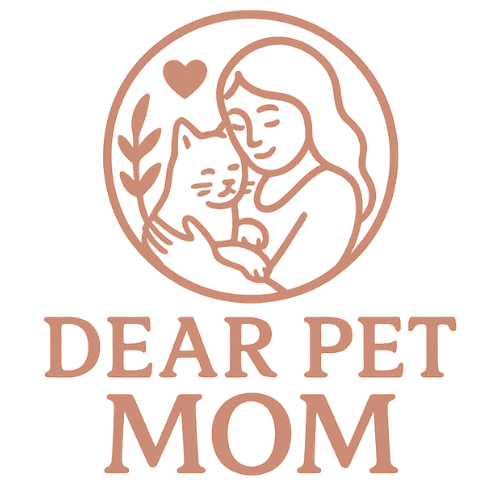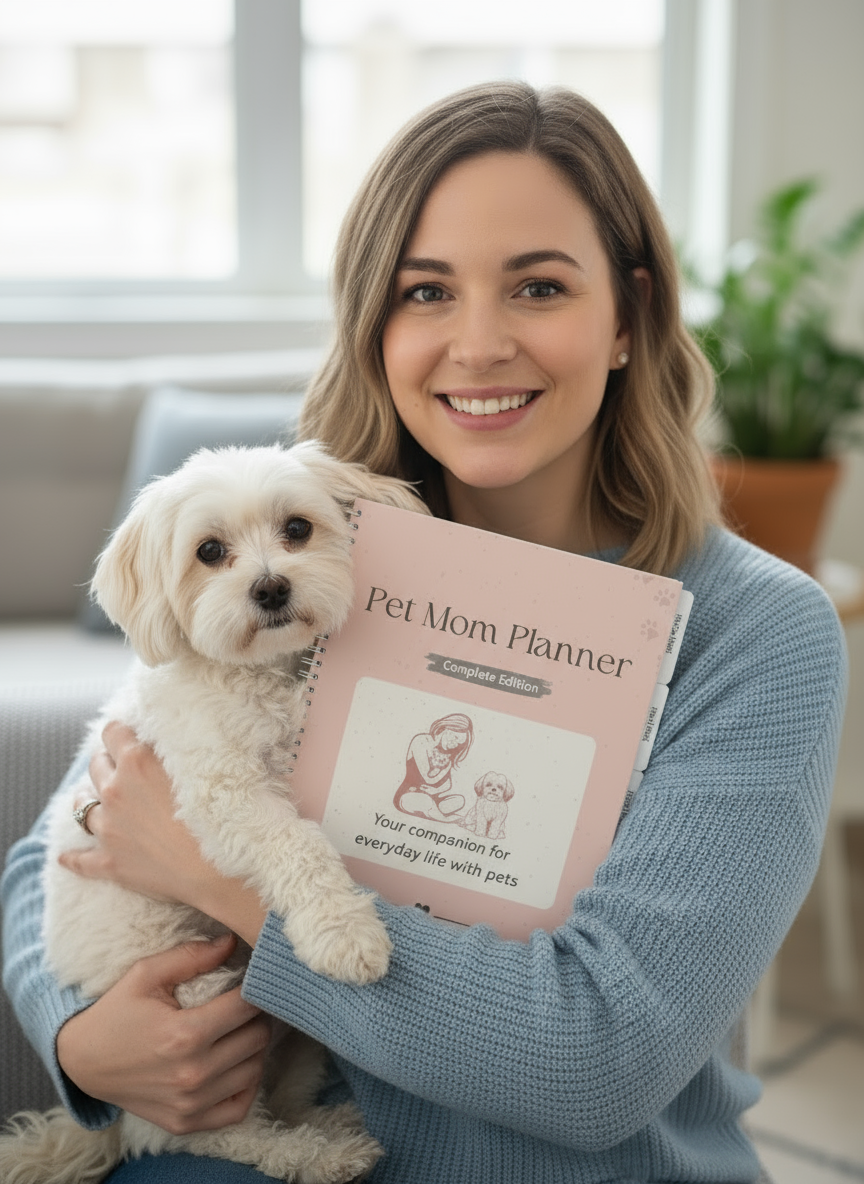Bringing Home a New Pet: The Essential 30-Day Checklist
Dear Pet Mom,
Bringing home a new dog or cat is a joyful milestone. It is also a major transition for both you and your new companion. The first thirty days set the tone for trust, routines, and confidence, so a little structure can help your home feel calm and predictable.
This guide walks you through the essential things to organize in your first month together. It is designed for puppies, kittens, adult pets, rescues, and even senior companions. Use it as a gentle week-by-week roadmap to feel more prepared and less overwhelmed.
Download or save a printable version of the checklist below and see how the Pet Mom Planner can help you stay organized all year.
Before They Arrive: Prepare Your Home and Mind
Many new pet parents are focused on beds, bowls, and toys. Those are important, but your preparation should also include structure, safety, and emotional comfort.
Create a simple “pet folder”
Gather the documents you might need at any time. You can keep this physically or digitally. Include:
Adoption papers or breeder information
Rescue or foster contact details
Microchip number
Any existing medical records
Vaccination certificates
Notes on known allergies, medications, or behaviours
Having this ready saves time during vet visits or emergencies.
Set up a safe space
Your pet needs a place that feels predictable and quiet, especially in their first few days.
Choose a spot where they can rest without distractions.
For dogs: a crate or soft bed in a cozy area.
For cats: a quiet corner with a bed, scratching area, and hiding spot.
This is the first step in creating a sense of security.
Gather the essential supplies
Make sure you have:
Food that matches what they currently eat
Water and food bowls
Litter and litter box for cats
Collar or harness and ID tag
A leash if you have a dog
Waste bags
A few toys or enrichment items
These ensure a smooth first day without last-minute errands.
The First Week: Build Comfort and Reduce Overwhelm
The first week is about observation and settling in. Your pet is learning your patterns, and you are learning theirs.
1. Book your first veterinary appointment
Even if your pet appears healthy, an early vet exam:
Confirms their health baseline
Helps you plan vaccine schedules
Detects issues early
Allows you to build a care plan
This is also the best time to ask about food quantities, exercise needs, and recommended preventatives.
2. Establish a simple routine
Consistency helps new pets feel safe. Start with predictable windows for:
Meals
Potty breaks or litter box cleaning
Short play periods
Quiet rest time
Evening winding down
Even a loose routine lowers anxiety for both of you.
3. Watch for early behavioural patterns
You will start noticing clues about your new pet’s personality.
Take note of:
Where they choose to sleep
How they react to new people or noises
What they enjoy or avoid
Their comfort level with being alone
These notes help guide training and future habits.
4. Begin tracking expenses
New pets always cost more in the first month. Tracking helps you understand your future monthly pet budget. Include:
Supplies
Vet visit
Vaccines
Grooming
Food changes
This becomes valuable long term when planning yearly care.
5. Keep a daily log
This does not need to be perfect. A few notes each day will help you see patterns such as:
Eating well or losing interest in food
Sleep patterns
Stooling habits
First commands learned
Concerns that pop up
This will make your next vet visit easier and more accurate.
Weeks Two to Four: Build Routines, Confidence, and Trust
Now that your pet is settling in, you can start shaping their habits and long-term care.
Health and Vet Care
Add upcoming vaccination dates to your calendar
Ask your vet about flea, tick, and parasite preventatives
Monitor stool, appetite, and energy
Track reactions to new foods or treats
Note allergies or sensitivities
Continue logging any changes you notice
These habits help you catch issues early.
Training and Behaviour
You do not need intense training in the first month. Focus on small, gentle wins.
Invite your pet to explore new rooms at their pace
Reinforce simple commands like sit, stay, or come
Schedule brief, positive training sessions
Socialize gradually with people or other pets
Redirect undesirable behaviours without punishment
Use consistent verbal cues
Routine and patience build trust faster than strict discipline.
Daily Home Life
Create a home environment that supports your pet’s growth.
Offer regular enrichment such as toys, puzzles, or scent activities
Keep rest spaces calm and predictable
Feed at consistent times
Watch how they respond to grooming
Introduce brushing or nail care slowly and gently
Small steps today prevent stress later.
Build Your Care Team
Start gathering contact information for:
A groomer
A pet sitter or daycare
An emergency vet clinic
A trainer or behaviourist if needed
Even if you never use all of them, having this list ready gives peace of mind.
Your 30-Day Milestone
By the end of the first month, you should feel more connected to your pet and clearer about their needs. You will likely know:
Their preferred routine
Their sleeping and play rhythms
Their eating habits
Their energy levels
Their comfort with being alone
Their long-term vet plan
Your monthly pet budget
Behavioural shifts and progress
This is the perfect time to bring everything together in one organized home so you do not end up with scattered notes, photos, receipts, and reminders.
A Gentle Next Step: Stay Organized with the Pet Mom Planner
If you enjoy structure and want a calm way to keep track of vet visits, routines, health notes, expenses, training progress, and memories, the Pet Mom Planner becomes your quiet companion through this first month and every month after.
The planner helps you bring everything into one peaceful home so you feel confident and prepared as your pet grows.
Frequently Asked Questions
Is this checklist for puppies or kittens only?
No, it works for rescues, adult pets, and senior pets as well.
How strict should the routine be?
Think of it as a rhythm rather than a rigid schedule. Predictability helps pets feel safe.
Do I need to track behaviour or routines?
Yes, it helps you understand your pet’s personality, comfort level, and early health patterns. Track everything in one place and view your previous notes in a central location, such as the Pet Mom Planner.
Should I buy everything before the pet arrives?
Only the essentials. You can add items once you learn what your pet prefers.


